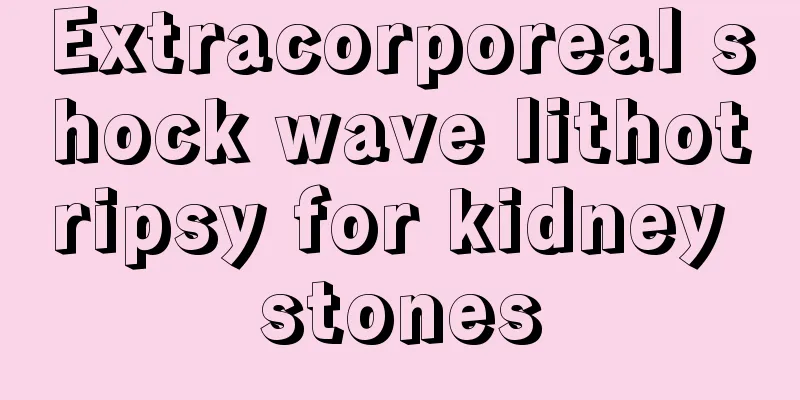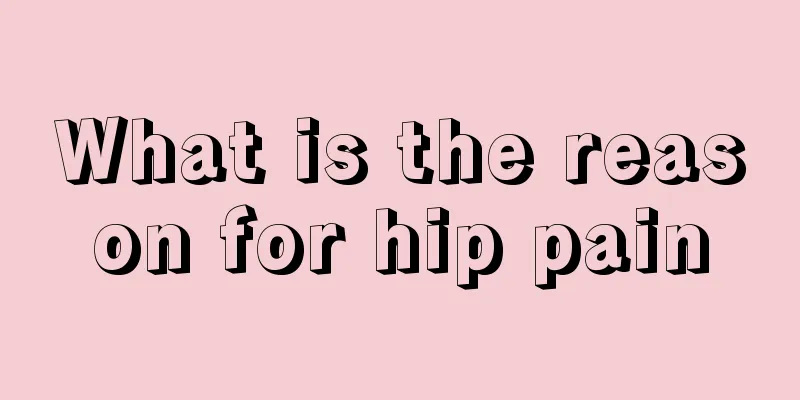Extracorporeal shock wave lithotripsy for kidney stones

|
Stones are a disease caused by improper living and eating habits. The most common site for stones to occur is the human urinary system, and the kidneys are a common site for urinary stones. When patients find that they have kidney stones, they should receive timely treatment, because when the stones grow to a larger size, surgical treatment is very difficult. The main method of treating kidney stones is extracorporeal shock wave lithotripsy. The following article will explain the relevant principles of extracorporeal shock wave lithotripsy for kidney stones. Extracorporeal shock wave lithotripsy uses shock waves to break up stones in the human body into small pieces to facilitate their excretion from the body. It, along with CT and MRI, is hailed as one of the three major new medical technologies of the 20th century. Precautions Indications Kidney and ureteral stones can be treated except those with obstruction below the stones. Most bladder stones and some urethral stones can also be treated. Some gallbladder stones can also be treated by lithotripsy. Contraindications A. Patients with uncured coagulation dysfunction; B. Patients with renal insufficiency due to renal parenchymal disease; C. Patients with severe hypertension and heart failure; D. Patients with uncontrolled diabetes; E. Patients with difficulty in locating stones, such as obese patients and children. What to prepare Relevant examinations should be completed before surgery, such as B-ultrasound, X-ray, blood and urine routine examinations. Bladder stones and lower ureteral stones require urine retention, and gallbladder stones require fasting. recover A. After urinary stones are crushed, you should drink more water, increase urine volume, and exercise more. Kidney stones need to be discharged in a certain posture, and stone-expelling drugs can also be used to facilitate stone excretion; B. During the stone excretion process, stones may block the ureter and cause pain. You should contact the treating physician in time for proper treatment; C. Regular follow-up examinations should be conducted to monitor the discharge of stones, and timely treatment should be given to those with poor efficacy, such as adding auxiliary treatments or switching to surgical treatment. In the process of breaking up stones, the shock wave will cause slight damage to the renal pelvic mucosa and the renal tissue around the stones due to the vibration and fragmentation of the stones. After a lot of clinical observation, it was found that the main complications of shock wave lithotripsy are: Hematuria: After extracorporeal shock wave therapy, almost all patients will experience hematuria of varying severity, especially those with kidney stones. Patients who have microscopic hematuria or mild macroscopic hematuria after lithotripsy generally do not need special treatment. As long as they drink more than 2000 ml of water, the hematuria will disappear naturally in 1 to 2 days. Patients with severe hematuria should go to the hospital to consult a specialist or receive treatment in time. Bladder irritation: Larger stones often contain bacteria. When the stones are crushed, the concentration of bacteria in the urine suddenly increases and causes infection. At the same time, due to the accumulation and blockage of stone sand in the narrow part of the ureter, urine discharge is not smooth, providing an environment for bacteria to grow, which is an important cause of frequent, urgent and painful urination. Therefore, it is required to give antibiotic treatment after lithotripsy to prevent and control postoperative infection. Renal colic: Renal and ureteral colic is common after lithotripsy. This is because it is difficult to break large, hard stones into sand at once. When larger stone fragments block the ureter, colic symptoms will occur. Generally, no special treatment is required. After symptomatic treatment with antispasmodics and analgesics, the symptoms of most patients can be relieved. |
<<: Laser lithotripsy and ultrasonic lithotripsy
>>: How long is the interval between two gravel crushings?
Recommend
Can the water used to blanch okra be drunk?
Okra is both precious and delicious. In fact, the...
How many days does it take to complete cervical cancer screening
The results of cervical cancer screening can be o...
What are the dietary taboos for lung cancer? Can lung cancer be cured?
There are many causes of lung cancer, among which...
What are the effects and combinations of various scented teas? The benefits of drinking various scented teas
Spring is here, the Yang energy rises, and it is ...
Six signs before good luck comes to life
Everyone hopes to be lucky and have good luck all...
Traditional Chinese medicine for treating liver cancer
With the development of medical technology, many ...
Basic knowledge about melanoma
Melanoma is prone to recurrence, so melanoma pati...
The advantages and disadvantages of eating spicy food frequently
Spicy food is probably loved by all Chinese peopl...
What is the chance of HPV-positive cervical cancer?
HPV infection is the main cause of cervical cance...
What to do if your eyes hurt due to lack of sleep? These methods can help relieve it
Nowadays, people often stay up late, and staying ...
Playing basketball Yan has lumbar disc herniation and buttocks and leg pain
Basketball is a sport that many people like. Alth...
What are the fruits that can protect against radiation?
Nowadays, people from all walks of life are suffe...
Can damp heat and damp cold coexist?
Is it possible for damp-heat and damp-cold to coe...
Can early bladder cancer be cured?
Bladder cancer is a malignant tumor that affects ...
Be careful when choosing a treatment for pancreatic cancer!
Although the mortality rate of pancreatic cancer ...









